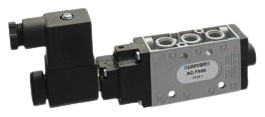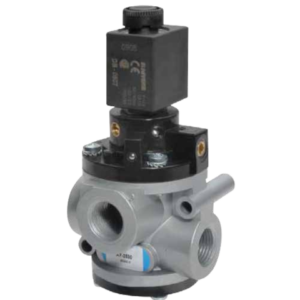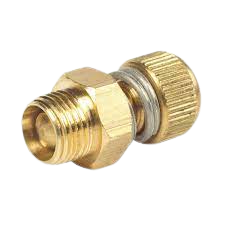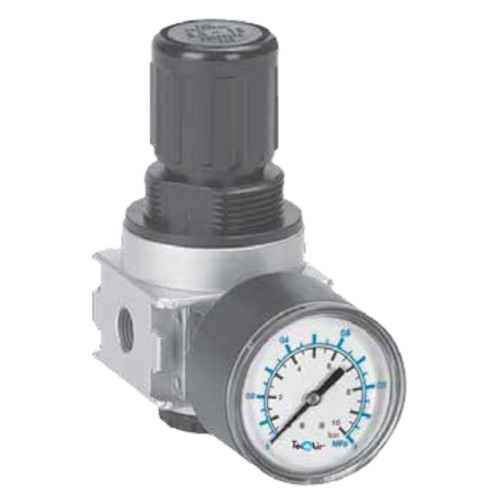The Benefits of Pneumatic Valves in Process Automation
When precision, speed and reliability are priorities in an automated process, pneumatic valves offer several distinct advantages over other actuation technologies. Their clean and responsive nature makes them well-suited for applications involving hazardous materials or stringent hygiene standards.
As linear or rotary actuators, pneumatic valves can rapidly switch machine cycles or direct the path of a material flow.
Cost Effectiveness
Pneumatic valve systems provide an extremely cost-effective solution for many applications. Compressed air is readily available in most industrial settings, so no additional utility infrastructure is required beyond an air compressor. Compared to hydraulic or electric alternatives, pneumatic components have fewer moving parts. This reduces maintenance needs.
Troubleshooting and repairing pneumatic circuits is also simpler for most maintenance technicians familiar with compressed air principles. The low initial investment and operating costs of pneumatic automation results in a very attractive total cost of ownership.
Precise Control
Pneumatic valves are capable of extremely precise control thanks to compressed air's uniform and reproducible qualities.
Tight shut-off capabilities as low as 1/100 of a millilitre allow for miniscule dosing adjustments in applications like injection moulding. Fast and predictable actuation times of 30 milliseconds or less ensure reproducible cycles and minimal variances in production outputs.
Proportional valves offer smooth and dynamically adjustable flows over a continuous range for applications requiring gentler control actions like tensioning or pressure regulation.
Speed and Responsiveness
Utilising compressed air for pressurisation allows pneumatic systems to react much faster than electric or hydraulic alternatives of comparable power ratings. Actuation can be completed in just milliseconds, faster than any human reaction time.
This speed contributes directly to increased production rates by allowing processes to cycle at their minimum possible intervals. Key sequence valves can also synchronise complex multi-step processes with sequenced timing.
Pneumatic circuits provide a compelling solution for fast-moving or high-demand assembly and packaging lines.
Reliability in Harsh Environments
Compressed air presents no risk of electrical shock or fire unlike electric actuators. This makes pneumatic components well-suited for hazardous environments with combustible dusts or vapours.
Sealed from external contamination, pneumatic cylinders and valves continue operating reliably even in dirty conditions. As simple linear actuators, pneumatic systems also have far fewer moving parts to wear out over time compared to servo or stepper motor drives. Maintenance needs are reduced as jamming from debris accumulation is not a concern.
Applications Benefiting from Pneumatic Valves
Pneumatic valve automation delivers benefits across many continuous and batch manufacturing industries:
- Food & Beverage: Dosing liquid and dry ingredients, capping/sealing, case packing
- Pharmaceutical: Blending, filling, capping, packaging of medicines and supplements
- Plastics Processing: Moulding, trimming, assembly operations
- Automotive: Sequenced assembly, adhesive/sealant dispensing, testing stations
- Electronics: Pick and place, dispensing, inspection, leak testing
- Packaging: Form fill seal, cartoning, palletising, wrapping
Types of Pneumatic Valves for Process Automation Applications
Within process automation systems, a variety of pneumatic valve types perform different functions based on the required control action. Understanding the characteristics and applications of common valve styles enables specifying the right component for each step in a production sequence.
Poppet valves have a cylindrical poppet that fits tightly inside a valve body. When air pressure is applied, the poppet lifts off its seat allowing air flow.
They provide good air sealing and are commonly used for on/off applications.
Directional control valves regulate the path of a compressed air line to pneumatic cylinders and are a fundamental building block for automation circuits. Types include 5/3-way valves to alternately supply air to either end of a cylinder for forward-reverse linear motion and 4/3-way valves for steady application of air to one end only. Pilot-operated 4/3 valves conserve air use for holding functions.
While directional control valves switch air flow paths, flow control valves meter compressed air at variable rates. Needle and spool valves can finely tune flows, while adjustable orifice valves offer discrete manual settings. Plug valves provide on/off control with intermediate flow positions. Flow control valves enable rate-based tasks like filling and dispensing operations.
Pressure regulators maintain a constant downstream air pressure regardless of upstream supply variations. This stabilises actuators like cylinders to ensure repeatability between cycles. Common regulator types include single and dual stage variants to filter fluctuations for critical processes.

Proportional Valves
Proportional valves enable infinitely variable control of compressed air flow rates utilizing feedback control signals. This "proportional action" seamlessly blends tasks like tensioning and indexing. Proportional valves see wide use in applications requiring gentler control than solenoids provide, such as glass handling, extrusion and test stands.

Pilot Valves
Pilot valves are essential components in process automation systems, working in conjunction with larger valves or actuators to provide precise control over the pressure, flow, and direction of compressed air. They act as the control mechanism for initiating the opening or closing of valves, allowing the desired flow of compressed air to be directed to specific pneumatic cylinders or actuators.
Selecting the Right Pneumatic Valve for Your Application
While all pneumatic valves utilise compressed air to actuate mechanical motion, specific characteristics make some designs better suited for certain process tasks than others. Carefully considering factors like operating pressure, flow requirements, duty cycle and environment enables identifying the optimal valve model. MasterMac2000's experienced team can assist with navigating this selection process.
Operating Pressure
Operating pressure is the main supply pressure supplied to a valve. Most common industrial compressed air systems run at 80-100psi, but some processes require lower or higher pressures. Valves must be rated to safely operate under worst-case pressure extremes. Burst pressure ratings ensure a safety factor above maximum operating conditions.
Flow Rate
How fast must air be supplied to or vented from an actuator? Valves provide different flow capacities based on their sizing and construction. High flow valves enable rapidly cycling pneumatic tools while precision valves offer incremental metering. Select a valve whose rated flow satisfies rate of action needs.
Duty Cycle
Duty cycle refers to the percentage of "on" time versus "off" time during a valve's operating period. Continuous duty valves maintain constant air flow while intermittent duty valves periodically switch between supplying and exhausting air. Consider a valve's recommended duty rating for your process cycle times.
Environmental Factors
Harsh environments like washdowns require corrosion resistant materials like stainless steel. Sealed designs prevent dust and moisture ingress important in pharmaceutical applications. Explosion-proof solenoids safeguard volatile processes. Consider temperature ranges, washing schedules, and hazardous ratings.
Mounting and Integration
Choose a valve body style compatible with your system's available space including panel, pipe, or compact inline mounts. Consider electrical connections/cabling needs and confirm pneumatic port fittings. Valves must integrate smoothly into existing machinery.
Lifespan Factors
Anticipated number of cycles, contingencies for jamming/breakdowns, and maintenance access requirements impact the need for hardened components and reserve capacity built into a valve's design life.
Installation and Maintenance is Key to Pneumatic Valve Performance
Once the right pneumatic valve is selected for an application, care must be taken during installation and routine maintenance to ensure optimal long-term operation. Small issues that arise can disrupt production if left unaddressed, so adhering to installation best practices and establishing preventative maintenance routines pays ongoing dividends in system reliability and uptime.
Installation
Before powering a pneumatic valve, ensure all mounting fasteners are secure and orientation matches technical documentation. Inspect for any shipping damage. Pneumatic ports should align with appropriately-sized and cleaned tubing secured by hose clamps, not friction. Apply thread sealant properly and avoid over-tightening fittings.
Route tubing to avoid damage, pinching or kinking. Use brackets or cable ties as needed. Install filters, pressure regulators and lubricators upstream as applicable. Purge dust from lines before use. For solenoids, note electrical schematics for proper coil voltage/wiring. Perform initial function tests before system startup to catch problems early.
Preventative Maintenance
Establish routines to inspect valves at recommended intervals based on operating cycles and environment. Check for leaks by applying soapy water or atomized oil around joints while pressurised. Tighten connections if needed based on torque specifications to avoid cracking.
Clear particulate accumulations from spool valves and pattern plates with compressed air blasts. Wash out interior paths of valves in dirty environments like food processing. Grease lube fittings if present according to product data sheets. Replace worn seals, o-rings or seals if leakage occurs.
Monitor pressure regulators to maintain setpoints and filter/replace elements when restrictions build up. Periodically test solenoids and proportional valves through full range of motion. Catch malfunctions before failures disrupt production flow. Proper maintenance minimises downtime from troublesome repairs later.
Summary
Pneumatic valves have been a crucial component enabling precision and efficiency across manufacturing and process automation industries for decades.
Whether providing sequenced motion, proportional control, or sanitary actuation, compressed air power translates directly into optimised workflow and maximum uptime. Emerging smart technologies further cement pneumatic solutions as an advantageous option for both established and developing applications.





